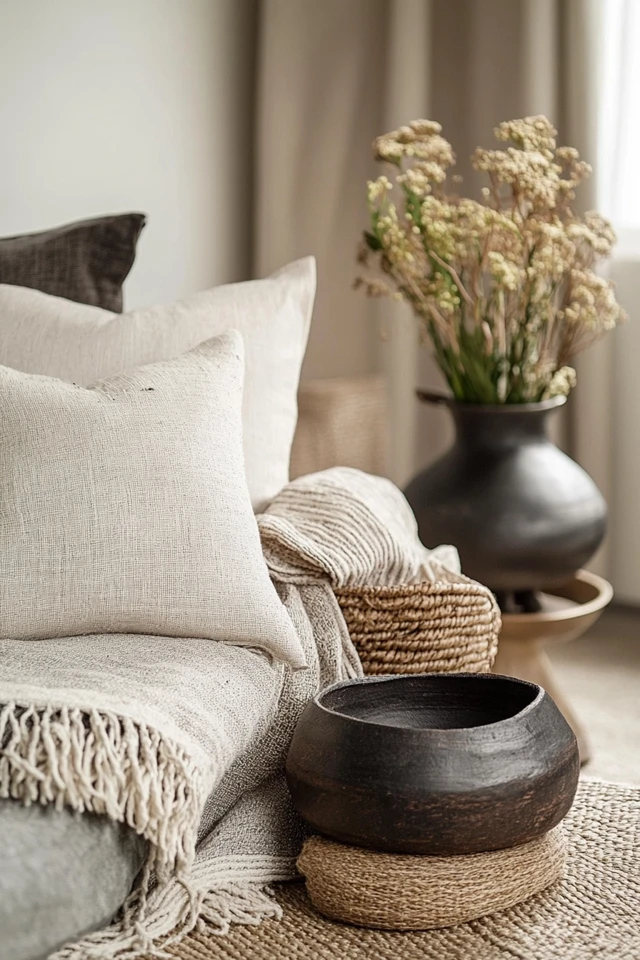Blending Scandinavian and Bohemian (Boho) styles may seem like an unlikely pairing, but when done right, it can create a beautiful, balanced environment that feels both cozy and eclectic. Scandinavian design is known for its clean lines, minimalism, and functionality, while Bohemian style thrives on a free-spirited, eclectic approach, with bold patterns, textures, and colors. Despite these differences, combining the two can result in a warm, inviting space that feels thoughtfully curated and unique.
I first discovered the magic of blending Scandinavian and Bohemian styles when I moved into a new home. I was drawn to the clean, calming aesthetic of Scandinavian design but also loved the vibrant, relaxed vibe of Boho décor. Initially unsure about how to merge these two styles, I experimented by adding a few Boho accessories to my Scandinavian-inspired living room. A brightly patterned rug here, a cozy woven throw there—and suddenly, the space felt more dynamic yet still grounded. The key was finding the balance between Scandinavian simplicity and Bohemian warmth, which created a harmonious environment that felt both fresh and inviting.
If you’re looking to create a space that combines these two styles seamlessly, this guide will walk you through each step, from color schemes to furniture choices. You’ll discover how to bring together the minimalist elegance of Scandinavian design with the laid-back, eclectic charm of Bohemian style.
Why Scandinavian and Bohemian Styles Work Together
1. Balance of Minimalism and Eclecticism
Scandinavian design is rooted in minimalism, focusing on functionality and simplicity, while Bohemian style embraces a free-spirited, more eclectic aesthetic. The beauty of combining these two styles lies in their balance. Scandinavian design’s emphasis on clean lines and neutral tones creates a grounding effect, which allows the more vibrant, layered elements of Bohemian décor to stand out without overwhelming the space.
By pairing the two styles, you create a dynamic, inviting room that’s visually stimulating yet calming. For example, a simple Scandinavian sofa in neutral tones can be paired with a colorful Bohemian-patterned throw or a mix of textured pillows for a layered, cozy feel that doesn’t feel cluttered.
2. Natural Materials Bridge the Gap
Both Scandinavian and Bohemian styles emphasize natural materials, which helps them seamlessly complement each other. Scandinavian interiors often feature light wood, leather, and wool, while Bohemian style incorporates rattan, jute, and cotton. The shared use of natural textures creates harmony and connection between the two aesthetics.
Consider introducing a mix of these materials—like a Scandinavian wood coffee table paired with woven rattan baskets or a Bohemian-style jute rug alongside Scandinavian wool throws. These materials help the two styles coexist effortlessly by bringing organic elements that ground the space and create warmth.
3. Warmth and Coziness
Scandinavian design tends to focus on creating spaces that are light, bright, and airy, often with white or light wood tones dominating the room. However, this can sometimes feel too stark or sterile. Enter Bohemian style: its rich textures, vibrant colors, and layered décor bring warmth and personality to a room, adding a sense of comfort and coziness.
By integrating Bohemian elements like plush rugs, colorful throws, or plants, you can soften the crisp, clean lines of Scandinavian design, making the space feel more lived-in and inviting. The combination of both styles fosters a space that feels both stylish and homey.
Step-by-Step Guide to Combining Scandinavian and Bohemian Styles
Step 1: Start with a Neutral Foundation
Begin by establishing a neutral base with Scandinavian design principles—light walls, wooden floors, and minimalist furniture. This neutral foundation creates a calm, airy environment that allows the bolder elements of Bohemian décor to shine without overwhelming the space.
Example: A soft white wall paired with a light oak dining table sets the stage for adding richer, more vibrant Bohemian elements like colorful cushions or a patterned rug.
Step 2: Introduce Bohemian Patterns and Textures
Bohemian style thrives on rich textures and patterns, but the key to blending it with Scandinavian décor is balance. Introduce Bohemian accents gradually through textiles such as throws, pillows, or rugs. Look for colorful, geometric patterns or natural textiles like cotton, linen, and jute.
Tip: A large Bohemian rug with intricate patterns can serve as a focal point in the room. Place it under a Scandinavian-style sofa or dining table to add depth and warmth. Pair it with solid-color pillows or throws to avoid visual overload.
Step 3: Incorporate Plants and Greenery
Both styles embrace nature, and plants are a perfect way to connect the two. Scandinavian design often uses plants to add life and freshness, and Bohemian style incorporates them as part of the overall aesthetic, often using hanging planters or large potted plants.
Idea: Place a large leafy plant in a Bohemian-inspired woven basket or hanging planter alongside minimalist Scandinavian furniture. This will give the room an earthy, relaxed vibe while keeping the space open and uncluttered.
Step 4: Mix Furniture Styles with Purpose
One of the hallmarks of Bohemian style is its mix of vintage, eclectic furniture. In contrast, Scandinavian furniture tends to be functional and minimalistic. When combining the two, aim to use the larger, more functional Scandinavian pieces as anchors and add Bohemian furniture in smaller doses.
Example: A light wood Scandinavian dining table can be paired with Bohemian-style chairs featuring intricate details or bold patterns. Alternatively, an iconic Scandinavian lounge chair can be paired with a colorful patterned throw or a handwoven basket. This way, the contrasting styles complement each other without clashing.
Step 5: Layer Textiles for Comfort and Style
Textiles are essential when combining these two styles. While Scandinavian design tends to favor soft, natural fabrics in neutral shades, Bohemian décor adds a sense of warmth and personality through the use of vibrant textiles. Layering these textiles will create depth and richness while still maintaining a sense of calm.
Idea: Add a woven blanket or a patterned throw on a minimalist Scandinavian sofa to add warmth and visual interest. Pair it with soft, solid-colored cushions for a balanced look that blends the two aesthetics.
Step 6: Use Natural, Handcrafted Items
Both Scandinavian and Bohemian styles emphasize the beauty of craftsmanship and the use of natural materials. Consider incorporating handmade or artisanal décor, such as handwoven baskets, pottery, or handcrafted wooden furniture. These items not only add texture and personality but also help maintain the organic, earthy vibe that both styles celebrate.
Example: Display a collection of handmade ceramics or woven baskets on a Scandinavian sideboard to bring a touch of Bohemian charm to the room. These items add authenticity and warmth while keeping the space grounded in natural materials.
Step 7: Incorporate Lighting That Reflects Both Styles
Lighting plays a key role in setting the mood of a room, and both Scandinavian and Bohemian styles embrace the importance of good lighting. Scandinavian interiors are known for their use of clean, simple lighting fixtures, while Bohemian design often incorporates more eclectic, whimsical pieces.
Tip: Use a combination of both by pairing a modern Scandinavian pendant light with Bohemian floor lamps or string lights. A natural wood floor lamp or a rattan pendant light can add a warm, inviting atmosphere that complements both styles.
Step 8: Add Personal Touches with Art and Décor
Art is a wonderful way to inject personality into your space, and combining Scandinavian and Bohemian art can be both fun and inspiring. Scandinavian art tends to be minimalist, with simple line drawings, abstract prints, or nature-inspired pieces, while Bohemian art can be more eclectic, with colorful, layered compositions.
Idea: Create a gallery wall with a mix of Scandinavian-style minimal prints and more colorful, bohemian-inspired artwork. This will help create a dynamic, curated look that blends both aesthetics seamlessly.
Step 9: Keep the Space Functional and Comfortable
Ultimately, both Scandinavian and Bohemian styles emphasize comfort and practicality. Scandinavian design is known for its functional approach, while Bohemian décor focuses on creating cozy, lived-in spaces. As you mix these two styles, ensure that the space remains functional—furniture should be comfortable and well-placed for easy movement, and décor should be practical without compromising on style.
Example: If you have a large Bohemian-style rug, make sure it complements the flow of the room and doesn’t obstruct pathways. Keep storage solutions simple and practical, using Scandinavian-style shelving or storage baskets to avoid clutter.
Step 10: Edit and Refine Your Space
The beauty of both Scandinavian and Bohemian design lies in their ability to evolve with time. While it’s easy to get carried away with all the beautiful textiles, colors, and furniture choices, it’s important to step back and edit the space as you go. Keep your focus on balance, ensuring that the room doesn’t become too chaotic or crowded.
Tip: After adding your key pieces, step back and evaluate the space. Is it comfortable? Does it feel inviting? Are there too many contrasting colors or patterns? Adjust and refine until you find the perfect blend of Scandinavian serenity and Bohemian warmth.
Picture Gallery
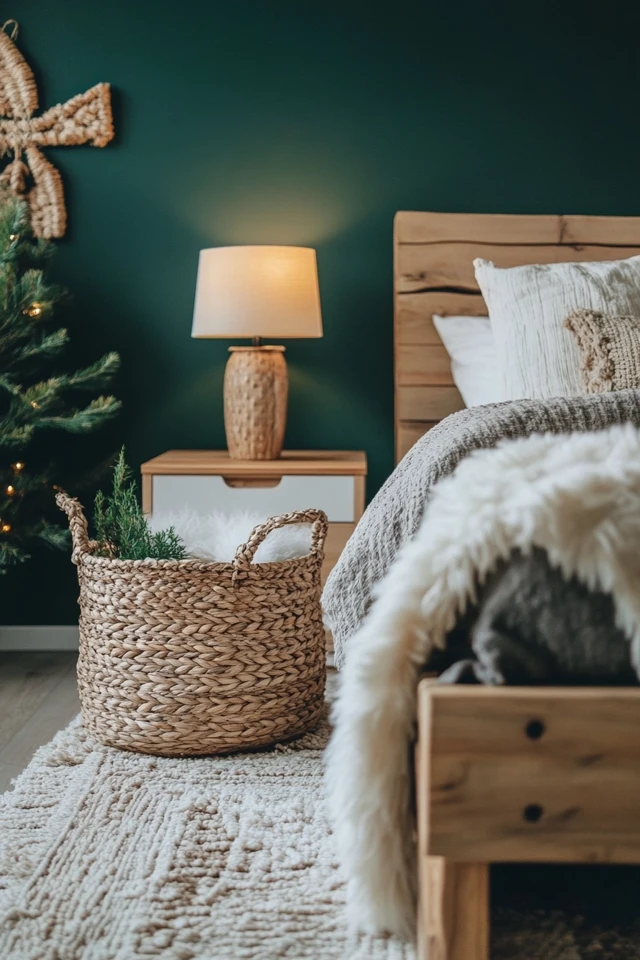

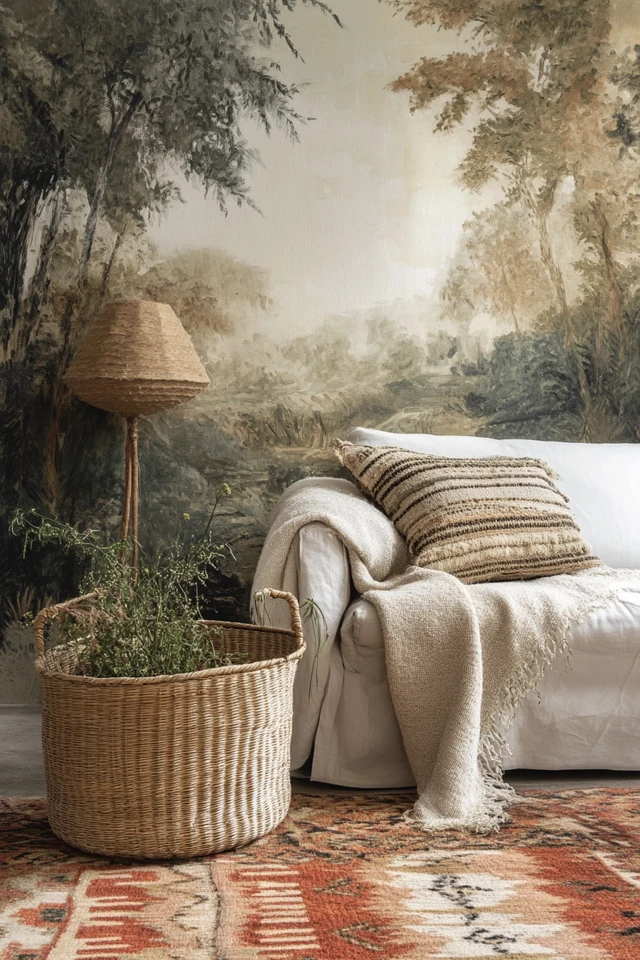
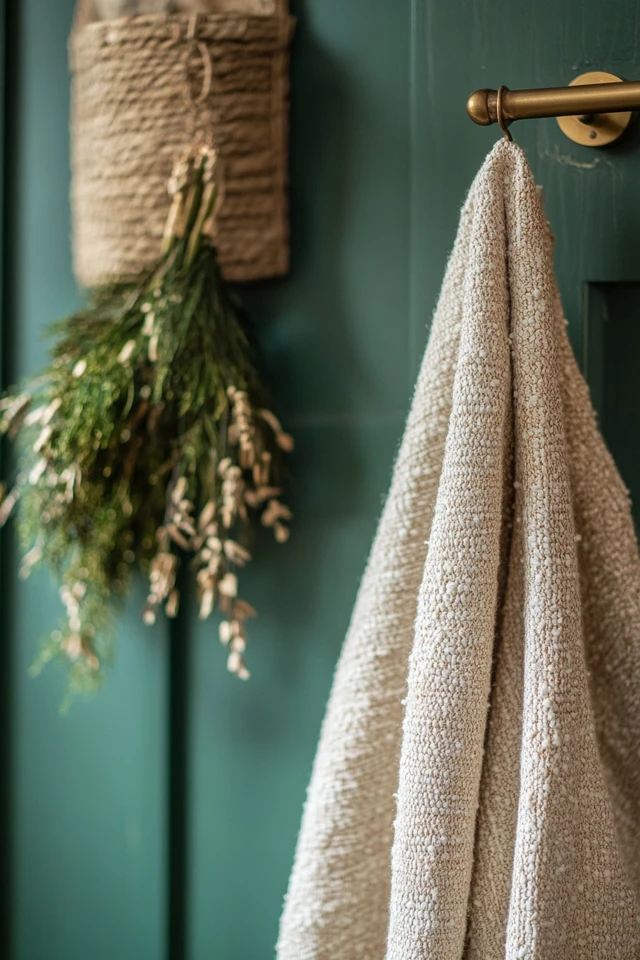
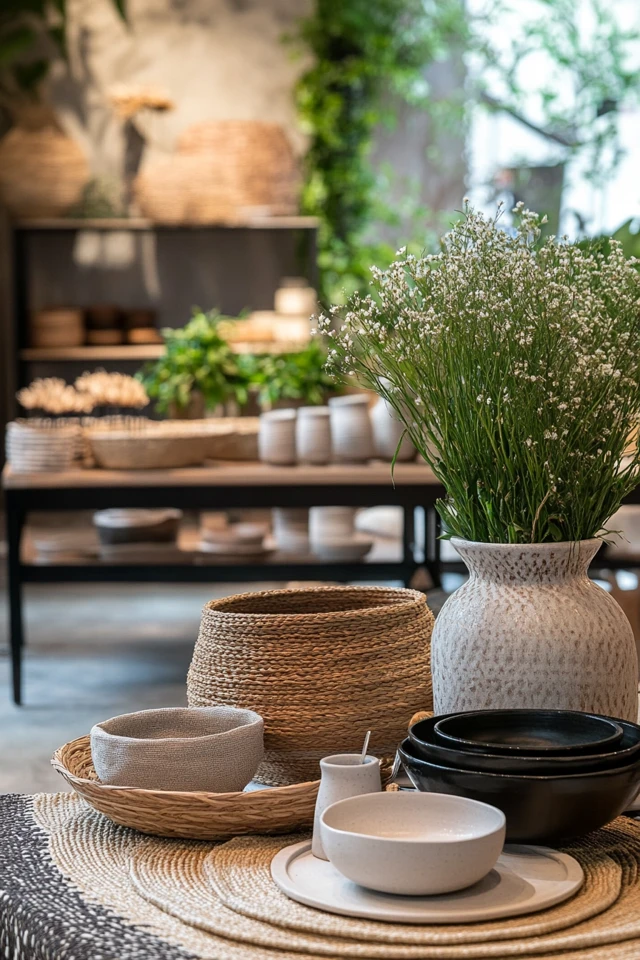
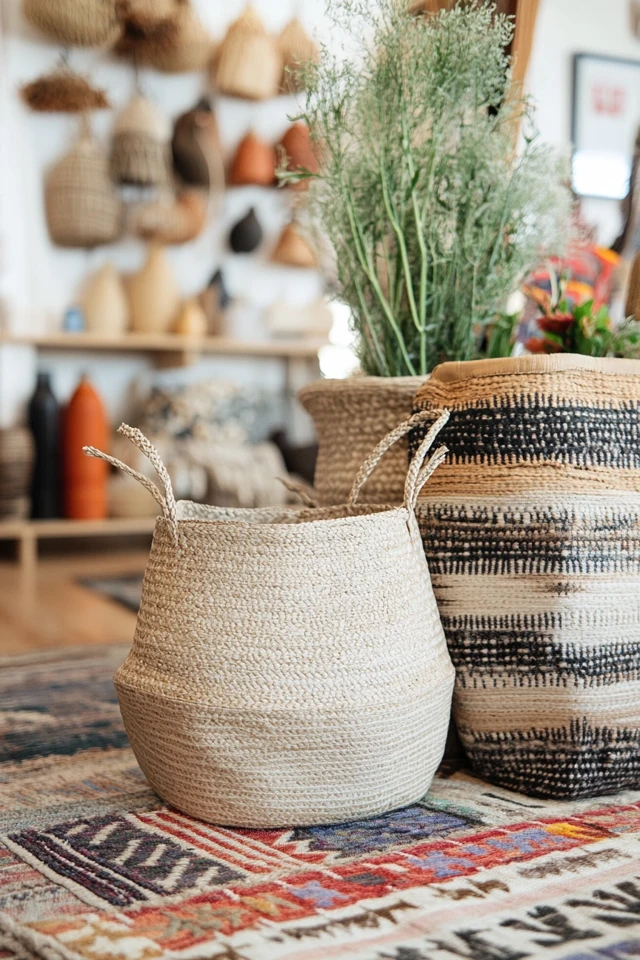
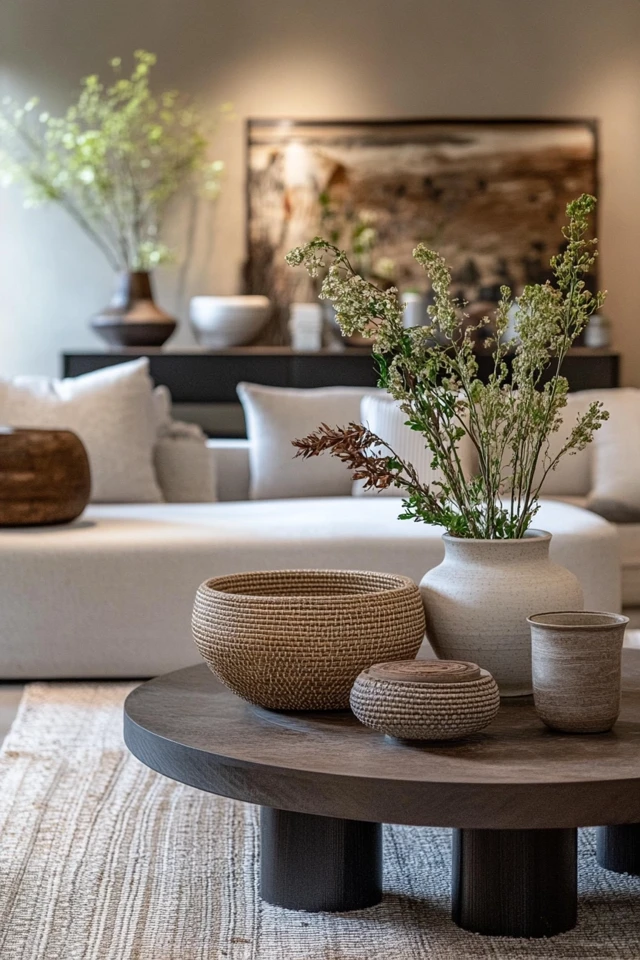
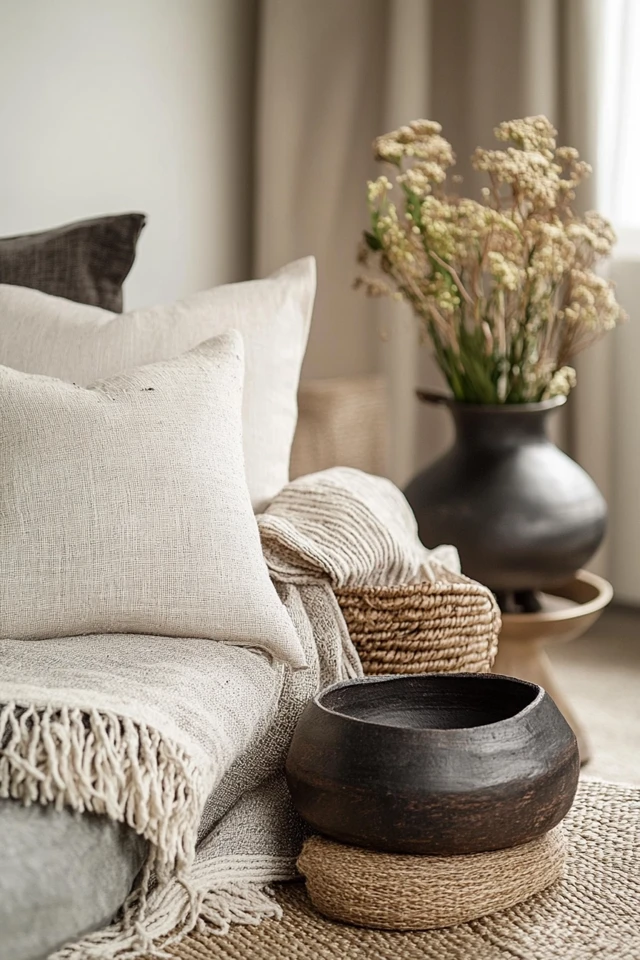
FAQ Section
1. What colors should I use when combining Scandinavian and Bohemian styles?
Stick to neutral shades like whites, grays, and beige for the Scandinavian elements, and add rich accents like terracotta, mustard yellow, and deep blues for a Bohemian touch.
2. Can I mix vintage Bohemian pieces with modern Scandinavian furniture?
Absolutely! The key is to balance the more eclectic, colorful Bohemian pieces with the simplicity of Scandinavian furniture. Keep the overall look grounded with neutral tones and cohesive textures.
3. How can I make my space feel cohesive while mixing these two styles?
The key to cohesiveness is balance. Keep larger items neutral and simple, and layer in Bohemian elements like textiles, plants, and art. The color palette and natural materials will tie the two styles together.
4. How do I avoid making my space look too cluttered?
Keep the base of the room minimalist and allow for open spaces. Don’t overcrowd the room with too many accessories. Instead, focus on a few key pieces that represent both styles and create visual balance.
5. What are the best materials to combine in these two styles?
Focus on natural materials like wood, rattan, cotton, linen, and wool. These materials are both functional and visually appealing in both Scandinavian and Bohemian design.
Conclusion
Combining Scandinavian and Bohemian styles can create a truly unique, inviting space that is both stylish and comfortable. By embracing the clean lines of Scandinavian design and the eclectic charm of Bohemian décor, you can create a balanced, dynamic home that reflects your personality and lifestyle. The key is to maintain a neutral base while layering in bold textures, patterns, and personal touches from the Bohemian style. With these thoughtful design strategies, you can achieve a harmonious fusion of two beloved aesthetics that makes your home feel warm, welcoming, and effortlessly chic.

